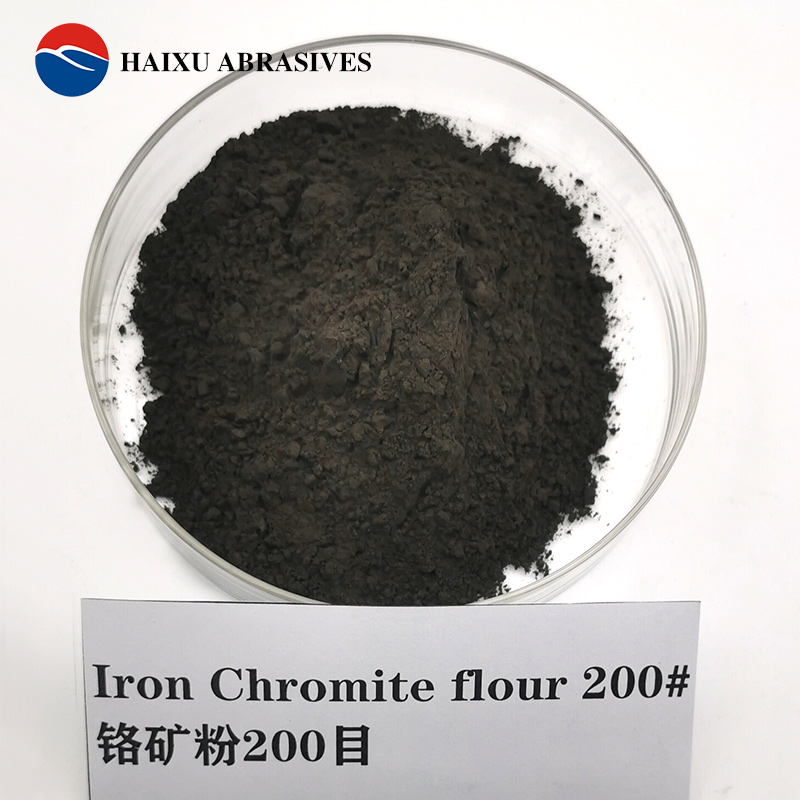Chromite flour 75um properties
Chromite flour 75 μm (200mesh) is a superior refractory mineral for foundry coating and glass & ceramic pigment. It has the following properties:
Physical properties
1. Particle size and shape
– With a size of 75 μm, it is in a fine – powder state. The particle shape can vary, but generally, it may have irregular shapes. The relatively small particle size gives it a large specific surface area, which can affect its reactivity and other physical interactions.
2. Density
Chromite typically has a relatively high density. The density of chromite flour is usually around 4.5 – 5.1 g/cm³. This high density makes it useful in applications where a heavy – weight filler or aggregate is required.
3. Color
Chromite flour is usually dark – colored, often black or dark brown. This color is due to the presence of chromium and other metal oxides in its composition.
4. Hardness
Chromite has a Mohs hardness of about 5.5 – 6.5. This means it is moderately hard, which gives it good wear – resistance and makes it suitable for applications where it may be subjected to mechanical stress, such as in certain types of abrasives or as a component in refractory materials.
Chemical properties
1. Chemical composition
Chromite is a spinel mineral with the general formula (Fe,Mg)Cr₂O₄. The chromite flour 75um for colorant and pigment has a Chrominum purity higher than 46%. It contains chromium (Cr), iron (Fe), magnesium (Mg), and oxygen (O). The specific ratio of these elements can vary depending on the source of the chromite.
2. Chemical stability
It is relatively chemically stable under normal conditions. It is resistant to many common chemicals, such as weak acids and bases. However, in the presence of strong oxidizing agents or at high temperatures in certain chemical environments, it can undergo chemical reactions. For example, it can react with strong acids under heating conditions to release chromium – containing ions.
3. Refractory properties
Chromite has good refractory properties due to its high melting point (around 2180 – 2250 °C). This makes chromite flour useful in the production of refractory bricks and other high – temperature resistant materials. These materials can withstand high temperatures in industrial furnaces, kilns, and other high – heat applications.
Thermal properties
1. Thermal conductivity
Chromite has a relatively low thermal conductivity. This property is beneficial in applications where thermal insulation is required, such as in some types of refractory linings. It can help to reduce heat transfer and improve energy efficiency in high – temperature processes.
2. Thermal expansion
It has a relatively low coefficient of thermal expansion. This means that it does not expand or contract significantly with changes in temperature. This property is important in applications where dimensional stability is crucial, especially in high – temperature environments where large temperature variations can occur.
















